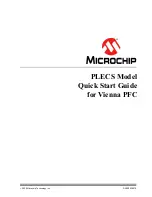1.2.2 Typographic notation
The following typographic notation is used throughout this document:
Example
Description
placeholder
, x
Items in italics are placeholders for information that you provide. Italicized text is also used for
the titles of publications and for emphasis. Plain lowercase letters are also used as
placeholders for single letters and numbers.
code
Fixed-width type indicates text that must be typed exactly as shown. It is used for instruction
mnemonics, directives, symbols, subcommands, parameters, and operators. Fixed-width type
is also used for example code. Instruction mnemonics and directives in text and tables are
shown in all caps; for example, BSR.
SR[SCM]
A mnemonic in brackets represents a named field in a register. This example refers to the
Scaling Mode (SCM) field in the Status Register (SR).
REVNO[6:4], XAD[7:0]
Numbers in brackets and separated by a colon represent either:
• A subset of a register's named field
For example, REVNO[6:4] refers to bits 6–4 that are part of the COREREV field that
occupies bits 6–0 of the REVNO register.
• A continuous range of individual signals of a bus
For example, XAD[7:0] refers to signals 7–0 of the XAD bus.
1.2.3 Special terms
The following terms have special meanings:
Term
Meaning
asserted
Refers to the state of a signal as follows:
• An active-high signal is asserted when high (1).
• An active-low signal is asserted when low (0).
deasserted
Refers to the state of a signal as follows:
• An active-high signal is deasserted when low (0).
• An active-low signal is deasserted when high (1).
In some cases, deasserted signals are described as
negated
.
reserved
Refers to a memory space, register, or field that is either
reserved for future use or for which, when written to, the
module or chip behavior is unpredictable.
Conventions
KL02 Sub-Family Reference Manual, Rev. 2.1, July 2013
26
Freescale Semiconductor, Inc.


















